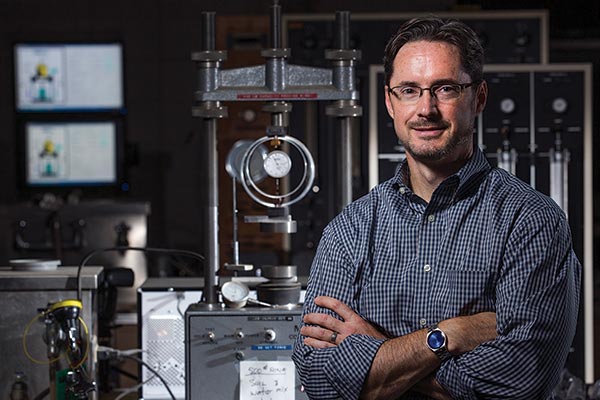
Many researchers say they want to shake up their fields of study. Iowa State engineer Jeramy Ashlock means it. Ashlock, the Richard L. Handy Professor of Civil, Construction and Environmental Engineering, studies how building and bridge foundations interact with soil during earthquakes and structural vibrations.
In research funded by an National Science Foundation CAREER award, Ashlock and his team are conducting full-scale field tests of the dynamics of piles, large steel or concrete foundations that are driven into the ground to support structures. They will test piles with a large servo-hydraulic shaker that applies random and multi-frequency excitations like those of an earthquake and record the physics of what happens.
Ashlock will use the experimental results to refine computer models that civil engineers use to help make pile design decisions. To accurately capture how the pile responds in reality, researchers must account for many complex variables: vertical, horizontal and lateral movement – along with the pile’s effects on the soil beneath it, around it and even soil far away from the pile.
“Measuring and modeling pile performance is an incredible challenge,” says Ashlock. “In our study, we’re ratcheting up the complexity and examining real-world conditions to verify some of the phenomena we have observed in simplified, scale-model centrifuge laboratory tests. Knowing more about real-world pile conditions will make it possible for us to recommend real-world design improvements for buildings and bridges.”